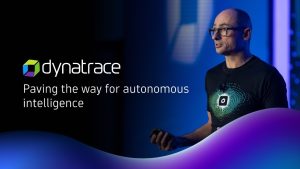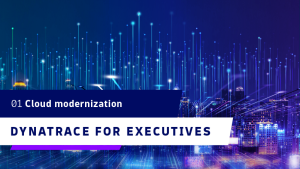IT modernization improves public health services at state human services agencies
For many organizations, the pandemic was a crash course in IT modernization as agencies scrambled to meet the community’s needs as details unfolded.
The early days of the pandemic highlighted the importance of communicating with the public and getting the message right. As science and instructions from public health officials often changed daily, citizen faith in public health institutions eroded. There was mass confusion over how to prevent the virus, what to do if you were sick, who was eligible for vaccines, and where to get them.
The lack of data blocked agencies from making informed decisions about a quickly mutating virus that posed different risks to different populations. Public health leaders, policymakers, and elected officials struggled to respond to the pandemic due to chronic underinvestment in public health at the federal, state, and local levels.
The pandemic has transformed how government agencies such as Health and Human Services (HHS) operate. Program staff depend on the reliable functioning of critical program systems and infrastructure to provide the best service delivery to the communities and citizens HHS serves, from newborn infants to persons requiring health services to our oldest citizens.
Modernizing IT through digital transformation promises to enable HHS to meet the ever-changing expectations of citizens and employees. Yet upgrading antiquated systems and effectively integrating them into modern workflows is challenging despite the potential to increase efficiency, improve security, reduce the higher operational costs associated with supporting tech debt, and avoid the foreseeable breaks in end-of-life apps.
The costs and challenges of technical debt
Retaining older systems brings both direct and indirect costs. For example, older systems may require additional support personnel or contractors to operate and maintain. If components have exceeded their typical life expectancy, a relatively minor system change may take a prolonged period to complete, and unexpected outages are more likely. Both can result in lost productivity for IT teams and staff in the field.
Further, legacy custom-developed apps were not built to meet the present-day user experience that HHS clients and partners expect. Upgrades and modifications, if available, are complex and expensive, so it isn’t easy to keep them secure and functional. Keeping the app working often requires the services of staff with institutional memory to rewrite and update code bases.
Generally, older technologies were not built to meet current expectations, are inefficient, difficult to maintain, and costlier to support long-term. IT modernization can help.
Enable DevOps teams to modernize legacy apps
Too many HHS IT organizations have an inventory of outdated applications with duplicative functionality, questionable states of health, and security vulnerabilities. It may be challenging to accurately catalog where applications are stored if some are maintained within a current infrastructure model while others are not.
It’s practically impossible for teams to modernize when they can’t visualize all the dependencies within their infrastructure, processes, and services. Yet avoiding IT modernization can negatively affect the quality of support an agency can offer to the community as well as the agency’s reputation.
Modernizing IT requires that teams have the capability to auto-discover dependencies and visualize their environments so they can understand the codebase and its underlying dependencies. These insights and intelligent automation enable teams to modernize outdated apps with confidence. The team can also focus on developing new cloud-native apps that provide the scalability necessary to deliver reliable services, especially during times of crisis when families need HHS the most.
Modernizing IT enables automation to work at scale
For organizations with scarce resources and heavy workloads, automated workflows can enable IT teams to monitor, manage, secure, and troubleshoot applications at scale. Having the right tools to resolve problems is vital to maintaining the continuity of operations and building a happier workforce.
To help teams automate workflows across their full multicloud stack, Dynatrace provides a head start on IT modernization based on a platform approach. Built on the AutomationEngine, Dynatrace automated multicloud workflows allow teams to visualize and automate processes. Once created, teams can customize these automated operations to specific environments or scenarios as necessary. In practice, automated workflows enable teams to move beyond application monitoring and event understanding and to take targeted action.
The Dynatrace unified platform converges observability and security to break down silos and empower end-to-end automation, helping teams deliver faster time to value without compromising security.
Proactively manage app performance and reliability
For HHS, system performance is mission-critical for program areas within the state’s safety net. When services experience unexpected outages, clients may experience delays when applying for online health benefits or receiving critical care.
Modernizing IT with continuous observability alerts IT Ops to real-time application outages or degraded performance. It discovers the root cause of issues, so the team may resolve them before they impact constituents. This moves the team away from reactive incident management that contributes to extended outages due to manual escalations.
Understanding how dependencies affect application performance positions the team to make better decisions, such as adjusting service architecture or infrastructure to improve application performance or holding third-party vendors accountable for causing performance issues.
IT modernization reduces security risks
Millions of citizens trust HHS with personal, financial, and other sensitive information requiring protection at the highest levels. Cyberattacks are rapidly evolving and can potentially expose sensitive client and agency information, disrupt critical operations, and violate the public’s trust.
HHS tends to have large numbers of systems, networks, and devices, which collectively increase complexity and the potential for failure, as does unsupported legacy tech. Recovering from a breach is costly and time-consuming and may result in penalties, audit findings, and the loss of program funding.
Modernizing IT with Dynatrace Application Security provides agencies with unified observability, security, and intelligent automation. This is crucial for a state agency, such as HHS, that electronically holds Protected Health Information (PHI) and Federal Tax Information (FTI).
IT modernization is essential for HHS
The IT environment directly impacts the level of functionality and resiliency that citizens can expect from HHS. Modernizing IT significantly benefits communities and the citizens HHS serves by improving security and regulation of applications and platforms, advancing service delivery quality and efficiency, as well as offering good stewardship of every taxpayer dollar by increasing productivity and reducing operating costs.
Dynatrace provides analytics and automation for unified observability and security. To learn more or to start a free trial, visit Dynatrace for state and local government.
Step 1: Understanding your legacy environment
In this ebook, we explain the urgent need for IT modernization and the cornerstone of a move to the cloud by comprehending your existing IT environment. A successful cloud migration starts with understanding which applications and workloads should move to the cloud and in what order.
Step 2: Design and activate your cloud migration strategy
It takes smart planning to migrate applications to the cloud with minimal disruption. In this ebook, we walk you through best practices for developing a cloud migration strategy, including examples from other agencies that have established a cloud-forward roadmap.
Step 3: Optimize your transition to the cloud with observability
With your move to the cloud, an observability strategy is imperative. Traditional tools for monitoring and observing modern software stacks struggle to deal with the dynamic and changing nature of cloud environments. In this eBook, we explain how advanced observability can help you ensure optimal application availability and performance for the best possible end-user experiences.





Looking for answers?
Start a new discussion or ask for help in our Q&A forum.
Go to forum